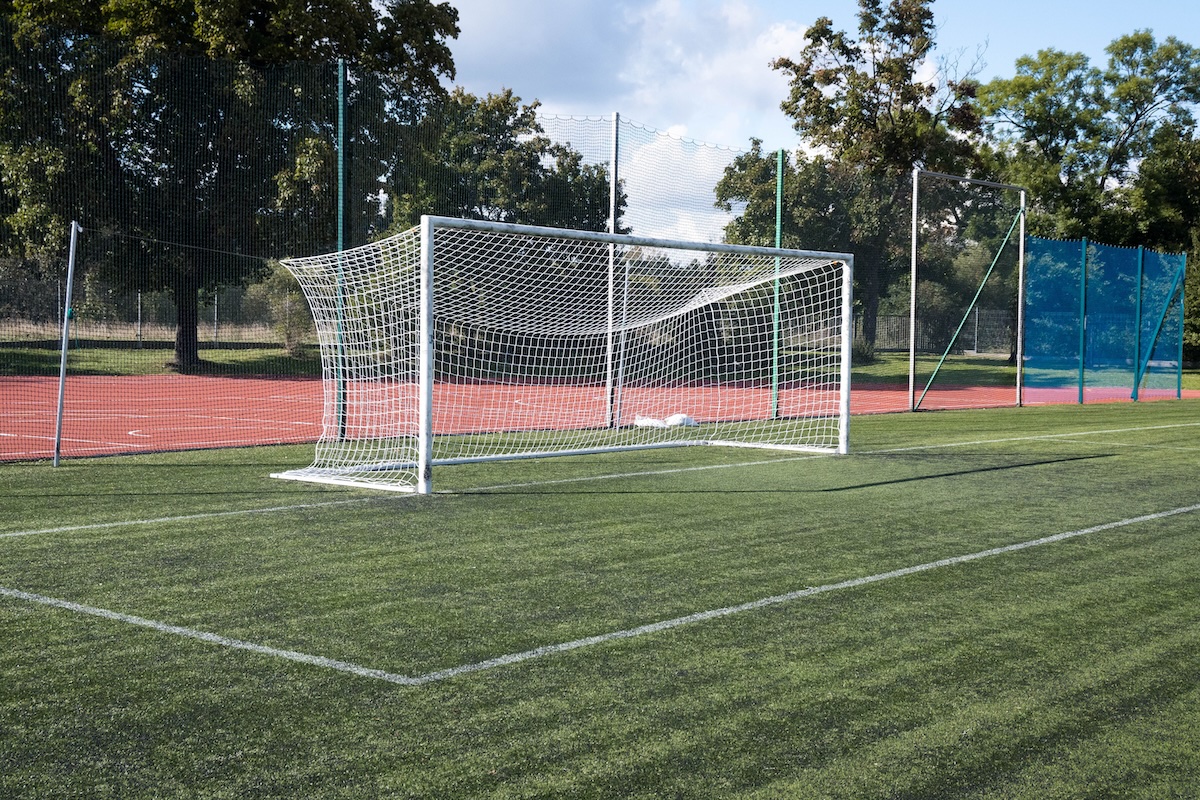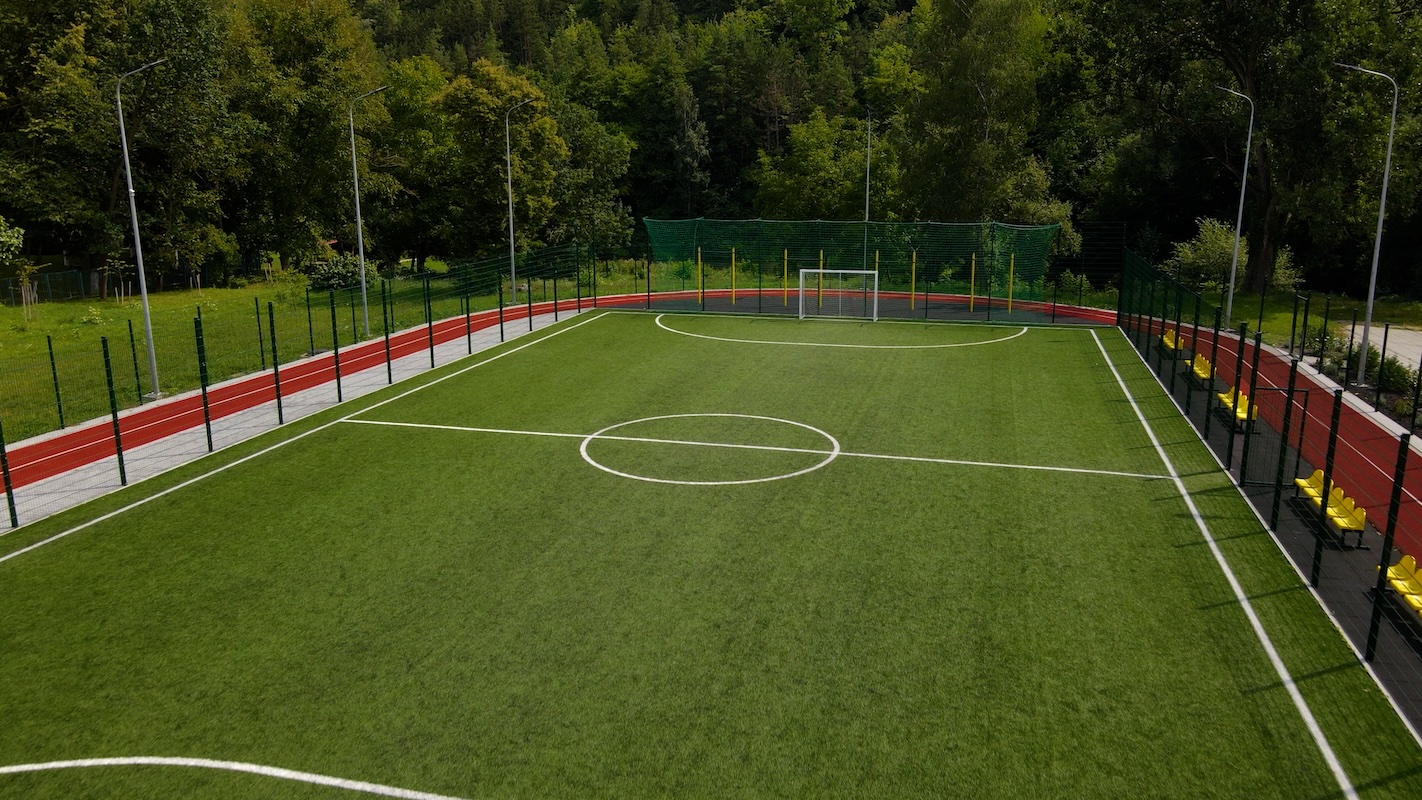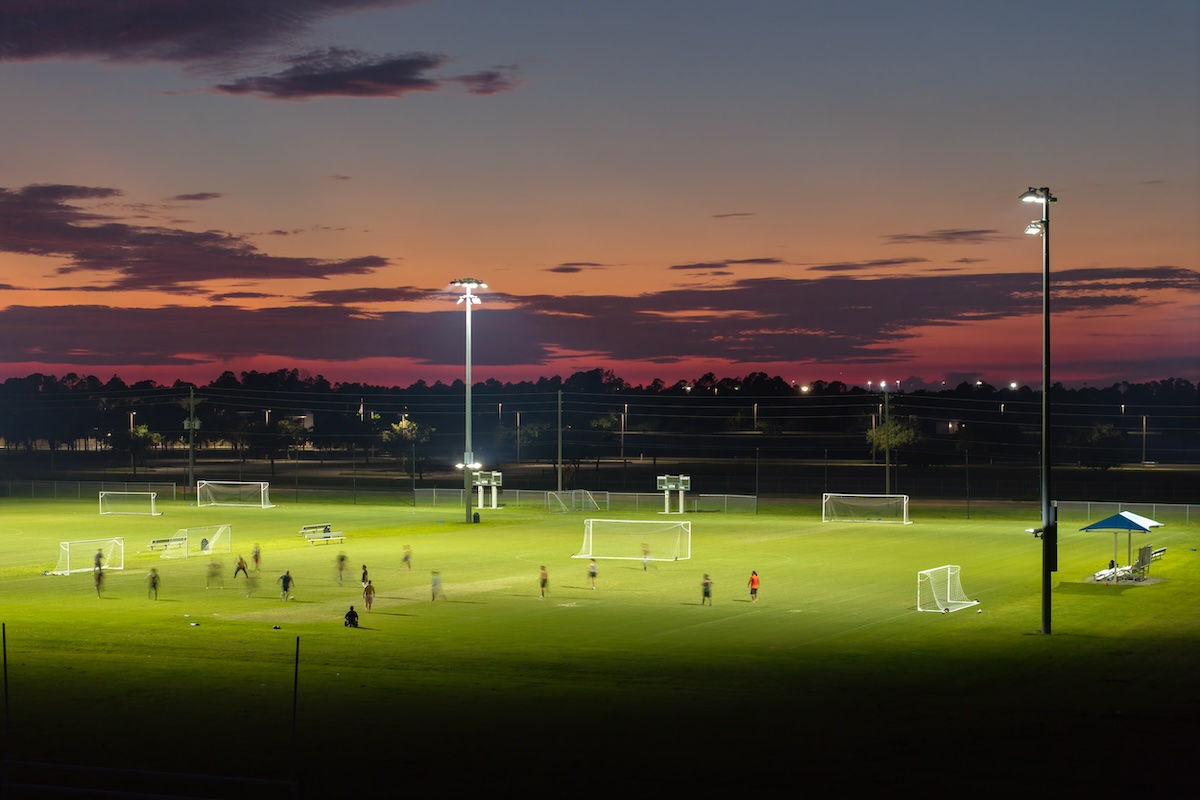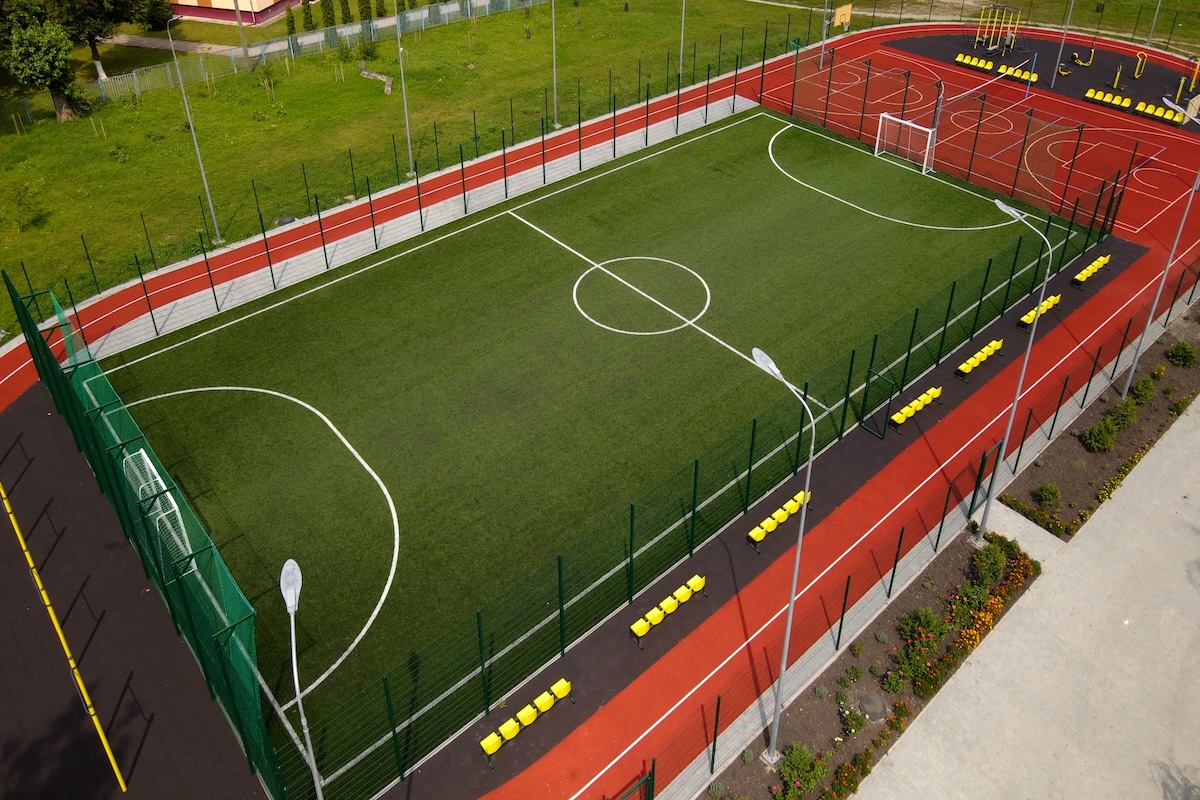Last Updated on November 5, 2025 by UDC Sports
The design of a multi-purpose sports field starts long before the turf rolls out or the lights go up—it starts in conference rooms and job trailers, on scratch paper and site maps. Long before anyone talks about logos at midfield, there are conversations about slope tolerances, run-out zones, drainage routes, and how close a maintenance truck can get without chewing up the base. It’s part geometry, part diplomacy, and part experience with how people actually use sports facilities once they’re built.
It begins with boundaries—how the space protects its players, spectators, and neighbors without feeling closed in, boxed up, or overbuilt. Too much fencing and it feels like a cage, too little and someone’s windshield becomes part of the game. Multi-purpose sports field designers can spend an incredible amount of time walking sites, squinting across open ground, picturing exactly how a soccer ball or a line drive will behave once the place comes alive.
Sports Field Design Starts with Space Beyond the Lines
Every field, from a single high school complex to a municipal recreation park, walks that line between openness and containment. It has to look welcoming from the outside but work like a carefully engineered safety system once play begins. The first layer of that safety planning is distance.

Designers think in terms of “run-out zones” and “overplay areas,” the buffer space beyond a field’s boundary where a player might slide, chase a ball, or lose footing. These are defined by sport-specific data—how fast athletes move, how much room they need to decelerate, and how often play crosses the line.
For example:
- Soccer needs longer clear zones behind goals
- Football benefits from reinforced padding and wider team areas along the sidelines to absorb impact and keep equipment out of play.
- Track facilities need protective barriers or offset distances between the running lanes and interior turf to prevent collisions during simultaneous events.
- Baseball demands lateral fencing that keeps spectators clear of foul territory
- Field hockey needs smoother, wider run-off zones along the sidelines, since play often extends past the boundary at full speed.
- Lacrosse requires taller end-zone netting to catch high shots and protect nearby fields or parking areas.
- Softball calls for extended backstop netting that wraps into the foul territory to protect spectators in compact layouts.
- Rugby relies on generous in-goal areas and unbroken turf transitions to maintain safe deceleration space.
It’s geometry driven by human behavior. You could stand at midfield of a good multi-use layout and see how everything fits together—the sightlines, the spacing, the gentle separation that keeps activity flowing without feeling fenced off.
Strategic Use of Barriers

While it’s natural to think “more is better” when it comes to safety, a well-designed field uses netting and barriers strategically rather than excessively.
Permanent fencing belongs where equipment storage, maintenance access, or property boundaries demand it. Beyond that, retractable or tensioned netting often takes over. It’s lighter, less obtrusive, and easier to reposition between sports.
Some community sports fields today actually use modular systems—panels that can move, roll away, or change height depending on the season. Baseball season needs higher containment near outfields, but once fall arrives, that same space transitions into open soccer fields.
The goal is flexibility without compromising safety, and the best designs pull it off in a way that feels natural, like the field knows what sport it’s hosting that week. (Okay, maybe that’s a little sentimental for a slab of aggregate and turf, but if you’ve ever watched a maintenance crew switch a complex over between seasons, you get it.) The lines change, the nets shift, the goals roll out, and somehow the whole place feels like it was built for whatever game’s about to start. That’s the small miracle of good design: simple adaptability that makes everything “just work” when it needs to.
Considerations for Changing Sports Seasons

Fencing height, net tension, and pole placement might sound like they can be afterthoughts, but they affect everything from wind loads to insurance coverage. A good sports field designer factors in the site’s context—nearby homes, parking lots, playgrounds, even walking trails.
No two sports facility construction sites are going to be the same, so containment solutions vary: you might see cable net systems that can flex with wind in coastal areas, or powder-coated steel posts chosen for high snow regions where brittleness becomes a concern. There’s an art to making these technical choices disappear into the background, so what the public sees is a clear, open view rather than what feels like a “cage.”
Creating Safe Viewing Zones in Multi-Sport Fields

Spectator areas are also part of the safety system. They have to be far enough to protect fans from impact but close enough that people still feel connected to the game. Sports facility designers now work from both sides of that equation—mapping safe zones for players and separate clearances for viewers.
You can tell when it’s done right: parents and families feel close to the action, but foul balls and errant kicks end up in nets, rather than in the bleachers.
Tip: Shade structures, bottle fillers, and accessible seating are other extensions of safety and comfort. A well-placed canopy or bench can turn a basic community field into a place people stay longer, engage more, and just generally take more pride in.
Planning for Storage & Access in Multi-Purpose Sports Fields
Behind the scenes, storage and maintenance areas matter just as much. Portable fencing, removable goals, and batting cages all need a home that’s easy to reach but out of the line of play. Poor storage planning leads to hazards—loose posts or stacked nets that end up too close to active zones.
Good sports facility design anticipates this, integrating lockable sheds, reinforced pads, or even turf-level access points for grounds crews. You can usually tell when a facility was built with input from people who actually maintain it. Nothing’s in the way, and yet everything’s exactly where you’d look for it.
Field Lighting Considerations
Sports Lighting Design

Light plays its own role in safety. LEDs make modern complexes usable deep into the evening, but placement and aiming can matter more than raw brightness or wattage specs. Sports facility lighting designers talk about “spill” and “glare,” but in plain terms, it’s about making sure the light lands where the play happens. One bad pole location can wash out the middle of the field or throw a shadow across the corner. It can cast glare that shines in the face of a goalkeeper, or darken a sideline just enough to turn a safe play risky.
Designers calculate illumination levels for each sport individually—higher for baseball and soccer, lower for casual practice fields. Some sites use dual-tier systems: one for full games, another softer setting for community use or maintenance. It can be a key difference between a field that feels professionally designed and constructed, and one that doesn’t.

All these details—fencing, netting, lighting, layout—add up to something bigger than compliance. They shape how people experience the field. Parents feel safe letting their kids run free, coaches know the boundaries are secure, and neighbors appreciate that the facility blends into the community.
Other Safety Considerations
Beyond fencing, lighting, and layout, there are dozens of smaller details that help create safe sports fields for schools, churches, and communities. The best designers plan for all of them from the start:
- Drainage and surface stability — keeping the base firm and the turf dry prevents slick spots, heaving, or uneven footing after heavy rain.
- Material selection for local climate — choosing UV-stable turf fibers, non-slip concrete, and corrosion-resistant fixtures helps surfaces age safely in any region.
- Emergency access and egress — gates wide enough for medical carts or fire vehicles, clear signage, and unobstructed routes shorten response times when seconds count.
- Accessibility as a safety feature — ADA-compliant paths double as predictable, smooth evacuation routes that make crowd movement safer for everyone.
- Heat management and surface temperature — reflective coatings, cooling infills, and ventilation underlays reduce turf heat during summer play.
- Post-installation testing and upkeep — regular G-max and HIC testing, seam checks, and infill depth measurements keep performance within safe limits.
- Perimeter security and controlled entry — smart gate placement and low-profile fencing prevent after-hours damage without turning the site into a fortress.
- Weather resilience systems — lightning detection, wind-rated netting, and snow-shedding structures reduce risk in extreme conditions.
- Communication and control systems — clear PA coverage and lighting tied to emergency shutoff circuits support fast, coordinated responses.
- Material transitions — careful detailing where turf meets track, concrete, or walkway surfaces eliminates trip points and keeps foot traffic smooth.
Each of these might seem small on its own, but together they turn a good field into a reliable facility—one that performs safely in every season, for every program that uses it.
Final Thoughts

The best designs make safety feel built-in rather than bolted on. You see what you need to, but it never distracts from the field itself. A fence that keeps the ball in play without feeling restrictive, a lighting plan that eliminates glare without drawing attention, a layout that guides crowds safely without oppressive-feeling barriers—all of those are examples of “invisible” safety.
Athletic facility designers don’t want users to notice what’s protecting them; they want them to feel comfortable, confident, and focused on the activity itself. The moment someone feels the safety feature—specifically when it obstructs, blinds, or distracts—it’s failing part of its purpose.
And somewhere between the turf line and the bleachers, you can sense the human side of all this engineering—a group of people who thought about what could go wrong and built a place where most of it won’t. The designer who walked the site one more time after everyone left, the foreman checking the last seam with a flashlight, the project manager proposing one extra drain just to be safe. It’s the part no one cheers for, but it’s what makes the whole thing work.
Every smooth surface, every clean runoff, every safe sideline came from a hundred small decisions made by people who cared enough to get it right before anyone ever set foot on the field.


